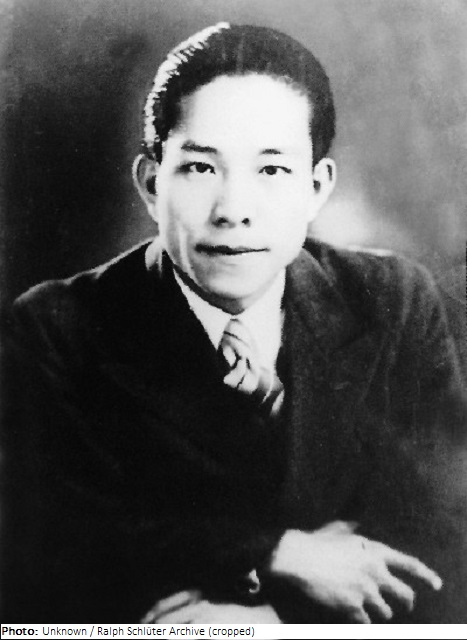Jiang Wen-Ye

Biographical information
| Roles | Competed in Olympic Games |
|---|---|
| Sex | Male |
| Full name | Jiang•Wen-Ye |
| Used name | Jiang•Wen-Ye |
| Name order | Oriental |
| Original name | 江•文也 |
| Other names | Bunya Koh, こう ぶんや, Jiang Wenbin, 江 文彬 |
| Born | 11 June 1910 in Datong, Taipei (TPE) |
| Died | 24 October 1983 in Beijing, Beijing (CHN) |
| NOC |  Japan Japan |
| Nationality |  Chinese Taipei Chinese Taipei |
Biography
Formosan Dance by Japanese musician Bunya Koh was awarded Honorable Mention at the 1936 Berlin Olympics in the Arts Competitions. Koh was born under the Chinese name Jiang Wen-Ye in Taiwan, which at that time was under Japanese occupation. Koh was a composer who worked mainly in Japan under his Japanese name. He produced a wide range of music, from piano to choral and orchestral works, and merged elements of traditional Chinese, Taiwanese, and Japanese music with modernist influences and was called the “Taiwanese Chopin.” Koh attended school in Nagano, Japan and then majored in electrical engineering at the Tokyo Engineering and Commerce Advanced School. He started his career as a singer, but then studied composition. As a well-known baritone, he performed several operas for the first time in Japan, including La Boheme by Puccini and Tannhäuser by Richard Wagner. Since 1938 Koh was also a teacher at the Beijing Normal University.
After World War II, Koh left his Japanese family and returned to mainland China, where he was stripped of his (Japanese) nationality, and considered a traitor. Under the Kuomintang-Regime he was thus imprisoned. Nevertheless, he was appointed professor at the Beijing Central Conservatory in 1947 and started a new Chinese family. After the founding of the People’s Republic of China he became a professor at the Tianjin Central Conservatory. He had to change his composition style to be more moderate in accordance with the ruling party, and was a political target because of his earlier ties to Japan. In the course of the Anti-Rightist-Movement in 1957 and the Culture Revolution in 1966 he was denounced as a “henchman of Japanese imperialism” and sent to a labor camp and much of his work was destroyed. After the end of the Cultural Revolution he was rehabilitated but his health had deteriorated and he died from a stroke a few years later.
The piano version of the Formosan Dance was written in April 1934, while its orchestral version was completed in August of the same year. It was originally planned only as part of a longer composition but eventually became an independent work as his Opus 1 with the sequence allegro – moderato - allegro. The orchestral version is played by 2 flutes, 2 oboes, 2 clarinets, 2 bassoons, 4 horns, 2 trumpets, 3 trombones, 1 tuba, 1 timpano, 1 piano, and strings. Unlike most other compositions presented at Olympic Arts Competitions, the 8-9 minute-long work has become quite popular and has been recorded several times.
Results
| Games | Discipline (Sport) / Event | NOC / Team | Pos | Medal | Nationality | As | |
|---|---|---|---|---|---|---|---|
| 1936 Summer Olympics | Art Competitions |  JPN JPN |
 TPE TPE |
Jiang Wen-Ye | |||
| Music, Compositions For Orchestra, Open (Olympic) |